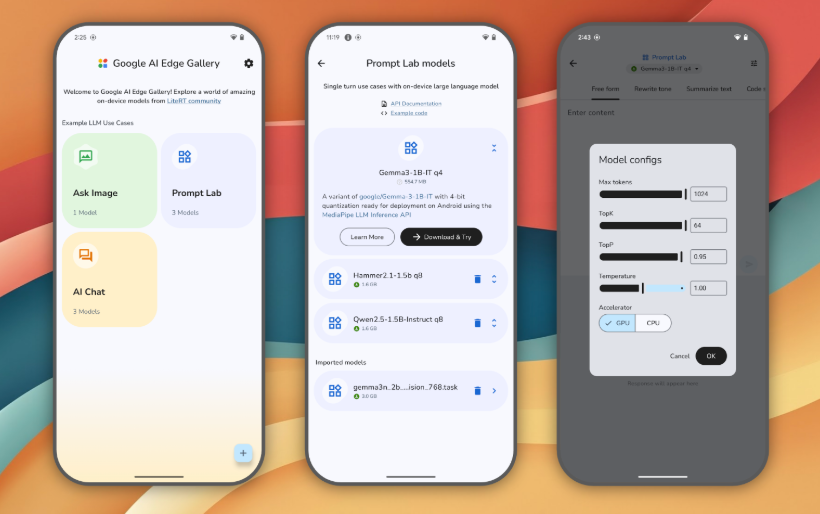Google Launches AI Edge Gallery with Gemma 3n for Local AI Development
At the Google I/O 2025 conference, Google unveiled AI Edge Gallery, a groundbreaking open-source project designed to simplify local AI application development. Powered by the Gemma 3n model, this initiative brings multi-modal capabilities—supporting text, images, and audio—directly to edge devices without requiring internet connectivity.

A New Standard for Edge AI
The AI Edge Gallery is currently available for Android (with an iOS version in development) and allows users to run open-source AI models from Hugging Face locally. Licensed under Apache2.0, the project’s code is accessible on GitHub, offering developers a flexible template to create customized AI applications. The Gemma 3n model, optimized for mobile devices, excels in offline environments with capabilities like speech transcription, image analysis, and real-time interaction.

Multi-Modal Flexibility
Gemma 3n’s integration enables diverse use cases. For instance, field technicians can photograph equipment and receive instant diagnostic feedback, while warehouse staff can update inventory via voice commands. The model also supports high-quality automatic speech recognition (ASR) and translation. With versions ranging from 2B to 4B parameters, Gemma 3n balances performance and efficiency, processing content at speeds up to 2585 tokens per second.

Developer-Friendly Features
The project leverages LiteRT runtime and LLM inference API for lightweight model execution. Developers can easily switch between Hugging Face models and utilize retrieval-augmented generation (RAG) to incorporate domain-specific data without fine-tuning. Additionally, Gemma 3n’s int4 quantization reduces model size by up to 4x, optimizing performance on low-power devices.
Privacy and Offline Advantages
One of the standout features is its fully offline operation, ensuring data privacy and low latency—critical for healthcare and industrial applications. By eliminating reliance on cloud services, businesses can cut costs while maintaining robust AI functionality.
Industry Implications
The launch signals a shift toward edge AI adoption. While some argue that edge models lag behind cloud-based counterparts in performance, advancements in hardware and optimization are narrowing the gap. Google’s open-source approach empowers developers to innovate across sectors like education, healthcare, and logistics.
Key Points
- Google’s AI Edge Gallery simplifies local AI development with the multi-modal Gemma 3n model.
- Supports text, image, and audio processing offline via Hugging Face integration.
- Open-source Apache2.0 licensing encourages developer customization.
- int4 quantization enhances efficiency for low-power devices.
- Offline operation prioritizes privacy and reduces cloud dependency.